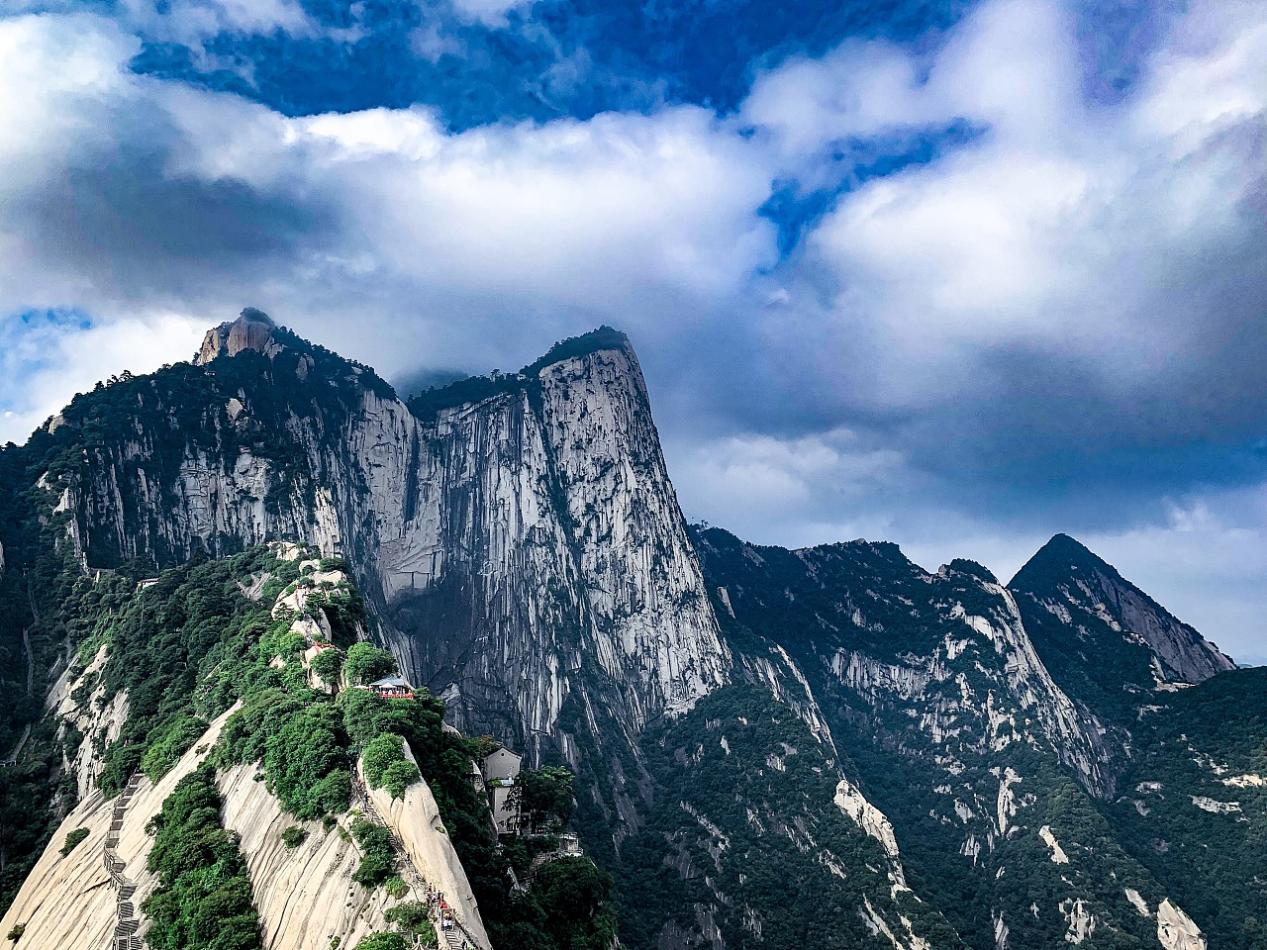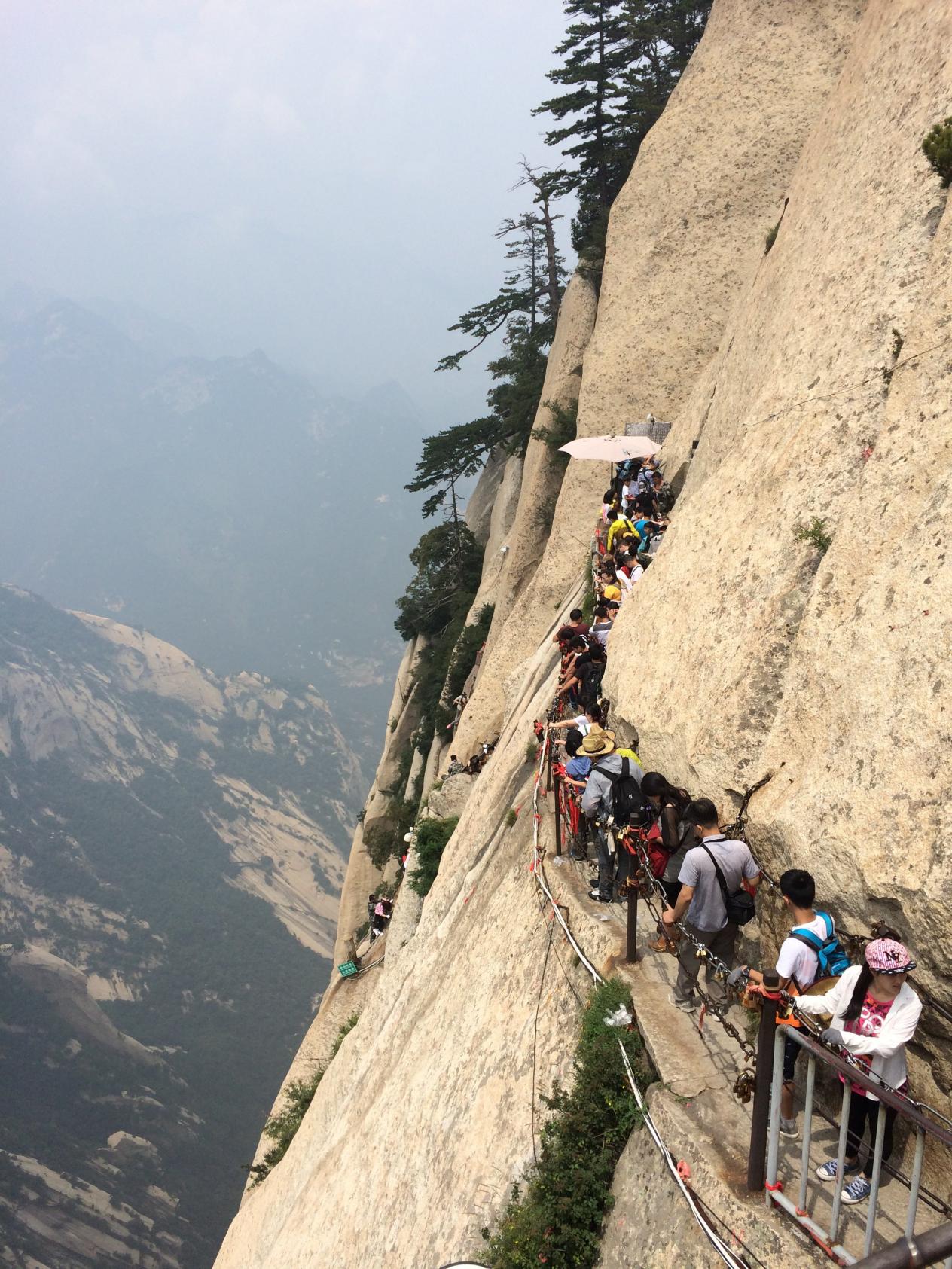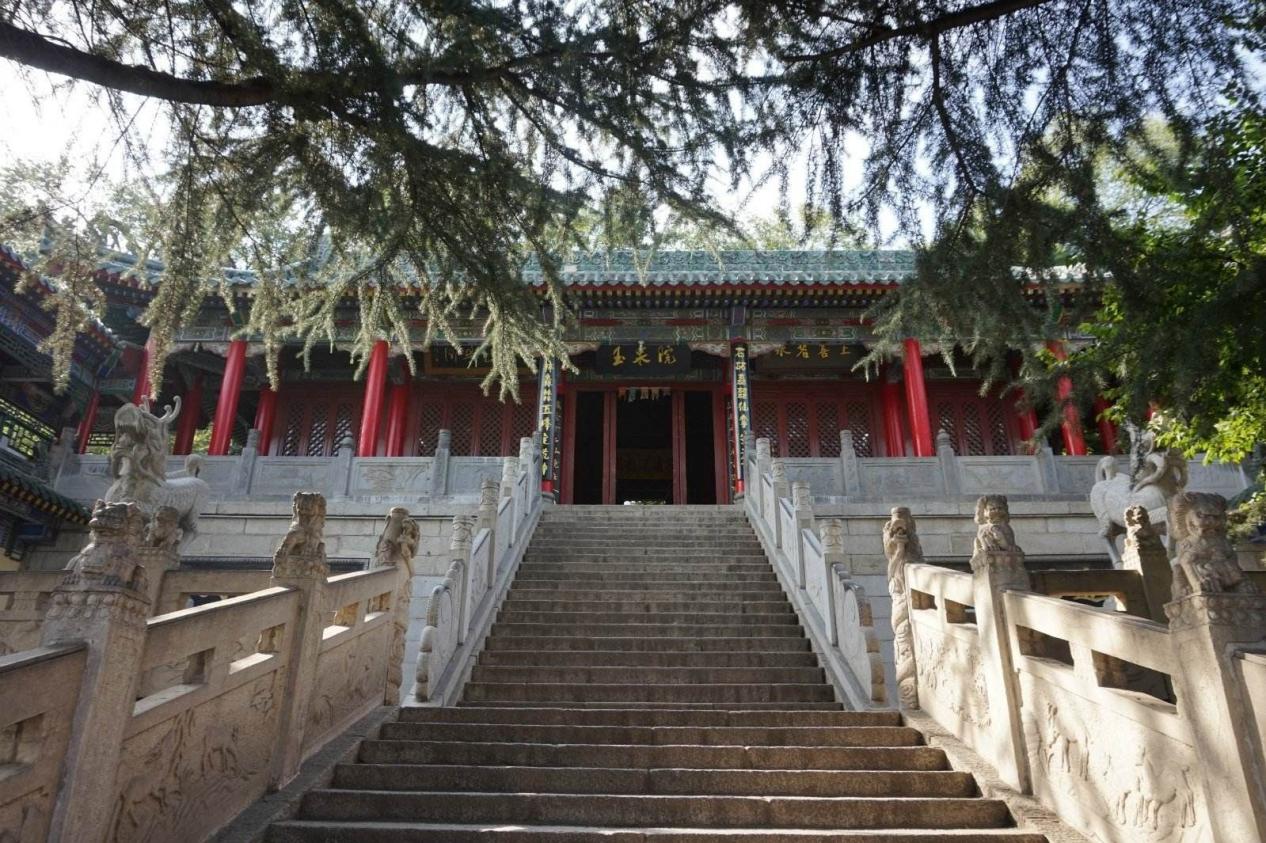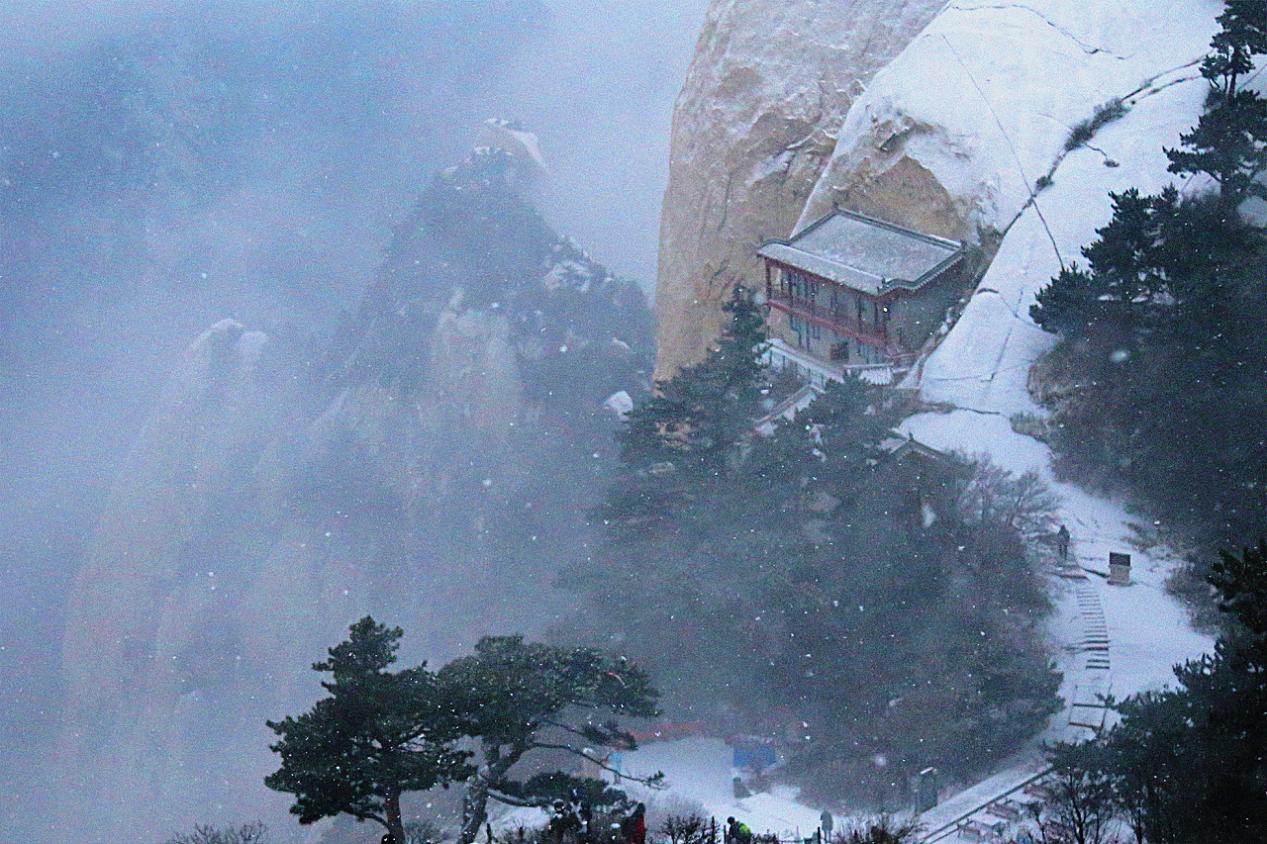Mount Hua, located in Shaanxi Province near the city of Huayin, is one of China's most renowned and sacred mountains. As one of the famous Five Great Mountains of China, Huashan is revered for its stunning natural scenery and rich cultural significance. Its towering peaks, precipitous cliffs, and historic temples make it a popular destination for both nature enthusiasts and pilgrims. The mountain's formidable beauty and its perilous hiking trails have also earned it the title of "the most dangerous mountain in China."
1. The Five Main Peaks
Mount Hua is famous for its five major peaks, each offering a unique and breathtaking view of the surrounding landscape. These peaks are:
- East Peak (Morning Sun Peak): Standing at 2,090 meters (6,857 feet), the East Peak is famous for its beautiful sunrises. It’s often the first destination for hikers who want to witness the golden sun emerging over the horizon, bathing the rugged mountains in light.

- South Peak (Landing Wild Goose Peak): The highest of the five peaks, South Peak reaches an elevation of 2,155 meters (7,070 feet). The peak is named after its resemblance to a wild goose landing and offers panoramic views of the surrounding valleys. It’s a challenging climb but rewards adventurers with some of the most spectacular views in all of China.
- West Peak (Lotus Flower Peak): The West Peak, at 2,086 meters (6,844 feet), is known for its elegant shape that resembles a lotus flower. This peak is associated with many legends and is home to the famous Taoist temple, the Temple of Immortals, believed to be a retreat for ancient sages.
- North Peak (Cloud Terrace Peak): Although North Peak is the lowest of the main peaks at 1,614 meters (5,295 feet), it is considered the gateway to the rest of the mountain. The North Peak is the starting point for many climbers, offering a relatively easier ascent before reaching the more challenging trails.
- Central Peak (Jade Maiden Peak): Central Peak stands at 2,038 meters (6,686 feet) and is surrounded by mythological tales. According to legend, it was the home of a jade maiden who left her earthly realm for spiritual enlightenment. Its mystical aura and serene beauty attract visitors who seek a quieter, less strenuous experience.
2. The Legendary Plank Walk and Dangerous Trails

One of the most famous aspects of Mount Hua is its harrowing trails. The Plank Walk, which clings to sheer cliffs with narrow wooden planks, is known as one of the world’s most dangerous hikes. The path is just a few feet wide in places, offering nothing but the abyss below and stunning panoramic views of the mountain range. Adventurous hikers secure themselves to safety chains as they traverse this path, adding to the thrill of experiencing one of the most daunting and adrenaline-pumping hikes on Earth.
Mount Hua’s network of steep staircases, vertical ladders, and narrow crevices create a challenging ascent to the peaks. The famed "Thousand-Foot Precipice" and "Hundred-Foot Crevice" are among the most notorious stretches, where hikers must exercise extreme caution as they navigate the dizzying heights and sharp drops.
3. Rich Cultural and Religious Heritage
Mount Hua is not only a natural wonder but also a significant cultural and religious site, deeply connected to Taoism. Since ancient times, Taoist practitioners have regarded the mountain as a sacred place, believing it to be a gateway to the heavens. Numerous Taoist temples dot the mountain’s landscape, offering a place of worship, meditation, and spiritual retreat for followers.
One of the most important temples is the Jade Spring Temple, located at the foot of the mountain. It is a key site for Taoist rituals and has long been associated with the legendary philosopher Laozi. Another famous site is the Golden Lock Pass, where visitors can hang padlocks on the chains for good luck, symbolizing their wish for protection and happiness.

4. Breathtaking Views and Natural Beauty
The natural beauty of Mount Hua is unparalleled. The landscape is characterized by towering granite cliffs, deep ravines, and dense forests, offering a variety of scenic spots to explore. In spring and summer, the mountain is covered with lush greenery, wildflowers, and the sounds of flowing streams. Autumn brings vibrant hues of red, orange, and gold as the trees transform the mountainside into a tapestry of color.
Winter turns Mount Hua into a wonderland of ice and snow, with frosty peaks and frozen waterfalls creating an ethereal atmosphere. Visitors who brave the cold are rewarded with tranquil and peaceful surroundings, as the snow-covered trails are far less crowded during this season.

5. Conclusion
Mount Hua stands as a testament to the power of nature, blending awe-inspiring beauty with an element of danger that has fascinated travelers for centuries. Whether you’re drawn by the thrilling adventure of the perilous trails, the spiritual allure of the Taoist temples, or the sheer majesty of the scenery, Huashan offers an experience like no other. For those who dare to explore its heights, Mount Hua provides unforgettable vistas, profound cultural insights, and a deep sense of accomplishment.
It is no wonder that Mount Hua remains one of China's most iconic landmarks, drawing millions of visitors every year to witness its breathtaking landscapes and experience its unique blend of adventure and spirituality.



